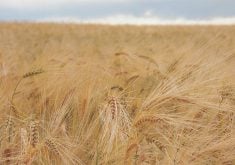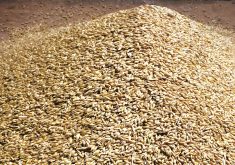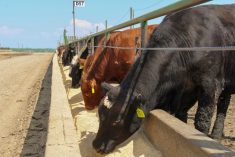CNS Canada — As spring slowly approaches, western Canadian feed dealers are warily eyeing the amount of grain that may be left over on Prairie fields.
“There’s a bit of concern about how much spring-threshed grain we may see here in the next few weeks,” said Allan Pirness of Market Place Commodities in Lethbridge. “That’s kind of staring at us from the supply side.”
Guesses vary, but the general consensus is that at least a few million tonnes of crops are left over in Alberta, Saskatchewan and Manitoba.
Read Also

India slaps 30 per cent import duty on yellow peas
India has imposed a 30 per cent duty on yellow pea imports with a bill of lading date on or after Nov. 1, 2025.
“That stuff, they’ll probably try to move whatever’s salvageable,” he said. “I would guess it will mostly end up in the feed market.”
If his prediction holds true, it could weigh down feed barley and wheat prices at a time when they are already under pressure.
According to Pirness, feed wheat is going for $150-$155 a tonne while feed barley is a touch higher at $160.
On top of that, much of the feed is already high in vomitoxin and fusarium.
“That’s the stuff that the cattle feedlots are figuring out how to make work,” said Pirness.
On the other side of the equation, barley acres are expected to decline this year.
It’s too early to count on that happening, Pirness said, but it’s a factor that could “firm” things up.
Farmers in most parts of the Prairies will have lots of work to do just to be in a position to seed their crops.
“Seeding could be later with all the extra work that didn’t happen last fall,” he said.
If that happens, he said, seeding could get delayed to a point where more acres start going into barley — which would put feed barley under more pressure.
Pirness pointed out, however, that much of southern Alberta is still covered in snow. “There’s not too much happening yet.”
— Dave Sims writes for Commodity News Service Canada, a Winnipeg company specializing in grain and commodity market reporting.












